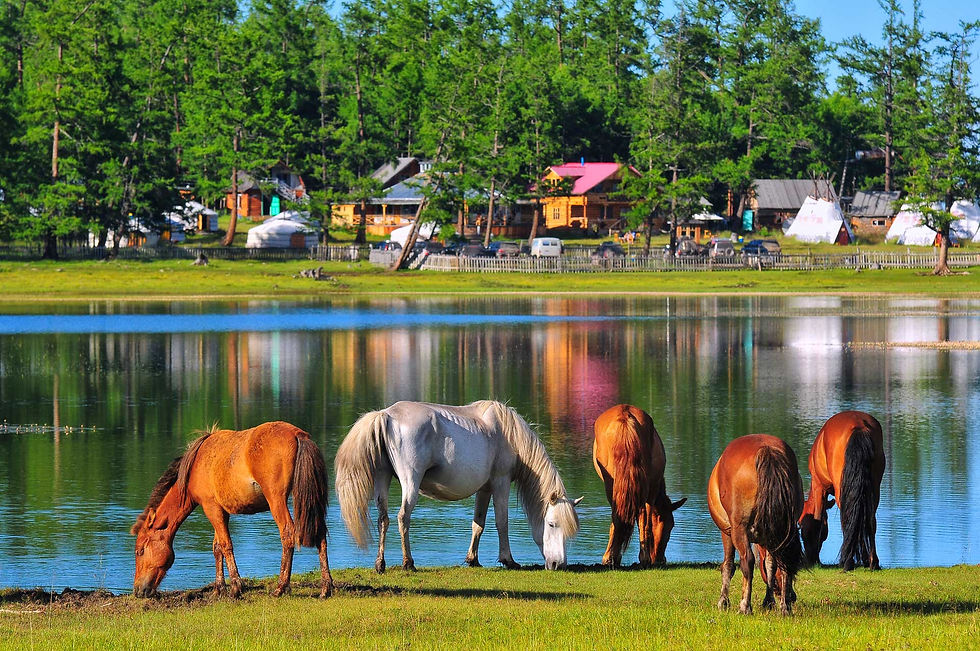When I started researching, I only knew what I heard about Mongolian beef. I was someone who probably never set foot in the country, so I did not know where it all came from. Nowadays, restaurants worldwide are served and made "Mongolian" by using meat from Mongolia. A restaurant chain like BD's Mongolian Grill came out, but I bet they have never eaten in Mongolia, or if they did, it is probably because they ate it in one of their restaurants in China.
A number of restaurants in Taiwan specialise in "Mongolian barbecue," such as the Mongolian Barbecue Grill and Mongolia BBQ Grill in Taipei and a few more in Hong Kong and Taiwan. Several restaurants in Taiwan specialise in Mongolian grill specialities, such as the Mongolian Grill in BD or even a small restaurant in Taoyuan City.
Oddly, this item does not appear on the list, so visitors to the country would not expect to find it.
There is only one place you can get it, and it is furthest from stirring - roasting. Mongolian barbecue in Mongolia, so it bears no resemblance to it here. Indeed, many of the restaurants around the world that serve it are anything but "Mongolian." The ingredients and cooking methods have nothing in common with Mongolian cuisine, even though it was opened by the first American chain to open in Mongolia in the late 1990 "s.
Of course, dishes such as breast fillet, bulgur and duck purée are classic, but that's just the tip of the meat mountain. Mongolian beef has all the hallmarks of traditional Mongolian meat dishes, such as steaks, ribs, pork, chicken, beef, lamb or pork chops. However, as for "Mongolian beef," it is not "Mongolian" and has no connection to Mongolia's authentic Mongolian cuisine. It is a rustic, salt and earth-like meal generally prepared in the Mongolian countryside for special occasions, including very few dishes such as khorkhog. Because the meat is so specially prepared, the "real" Mongolian cuisine is in no way underrepresented.

Boodog is a unique "Mongolian grill" made with goat or marmot and is a fantastic Mongolian dish made by cooking a mixture of hot stone, water, salt, garlic, onions, ginger and garlic. Like khorkhog, it belongs to the "Mongolian grill," which also uses hot stones as a cooking method. The "real" version of the Mongolian grill is to put a hot stone and water in a pot of water and cook the meat from the inside out. In this case, the hot stone is not placed in the pot but is actually inserted into the carcass itself and cooked.
To make khorkhog, the Mongols take the lamb, mutton or goat meat, cut it into small boneless pieces and cook it on the grill. Goat meat can be replaced by any other meat such as chicken, beef, pork, chicken breast, or chicken legs. To make khorkhogs, Mongols take lamb, mutton, and goat meat cut them into smaller pieces that are left boneless. Mongolian MakeKhork pigs and BBQ khorkhog, they cut the lamb into small pieces, right boneless left.
The Mongolian grill pan's large size allows several dishes to be cooked simultaneously on different parts of a grill grid. The generous grill plates of the Mongolian BBQ Khorkshog and BBQ Khorkshog allow several dishes to be cooked simultaneously in other parts of a grill.
Mongolian grilled dishes like the Chorchog remain so because of the ancient people's culinary traditions with modern life. I also think it is essential to add that Mongolian cuisine is strongly influenced by the cuisine of China, India, Japan, South Korea and other Asian countries. Watch this short Youtube video about Mongolian cuisine to get an idea of how the food was prepared and served during our trip. Enjoy this video of a Mongolian BBQ khorkhog, served with rice and eggs from Taste of Mongolia.
The Mongols still prefer their traditional cuisine, although they have been influenced by Russian and Chinese cuisine. But the chef Confucius has tailored the khorkhog from the Mongolian grill to please the taste buds of the Bhubaneswarites.
Rumour has it that the dish bears this name because it was widely believed that lamb was the meat of choice for Mongolian soldiers in pre-war Japan. The dome-shaped pan is said to represent the soldier's helmets, with which they allegedly cooked their food. In Japan, mutton is cooked and cooked in convex metal pans called Genghis Khan. The dish was not only reached that, however, because lamb is widely considered the meat of choice for Mongolian soldiers, but also in Japan, where it is believed to be, and in the US, it was rumoured that the dish was called that because in pre-Japan lambs were widely regarded and believed to be the meat of choice for Mongolian soldiers! According to some sources, the pan's dome shape was intended to depict the soldier's helmet he allegedly used to cook his food, rather than his father's helmet or even his own. It was also rumoured, though not necessarily so, that this dish was called since the lamb was generally regarded as the Mongols' food during the Japanese War and before that, if not the food of the Mongols.






















